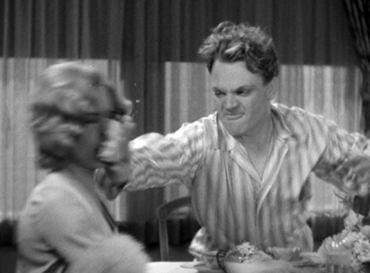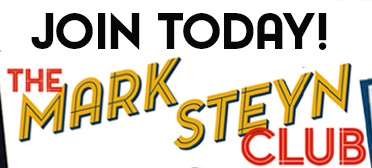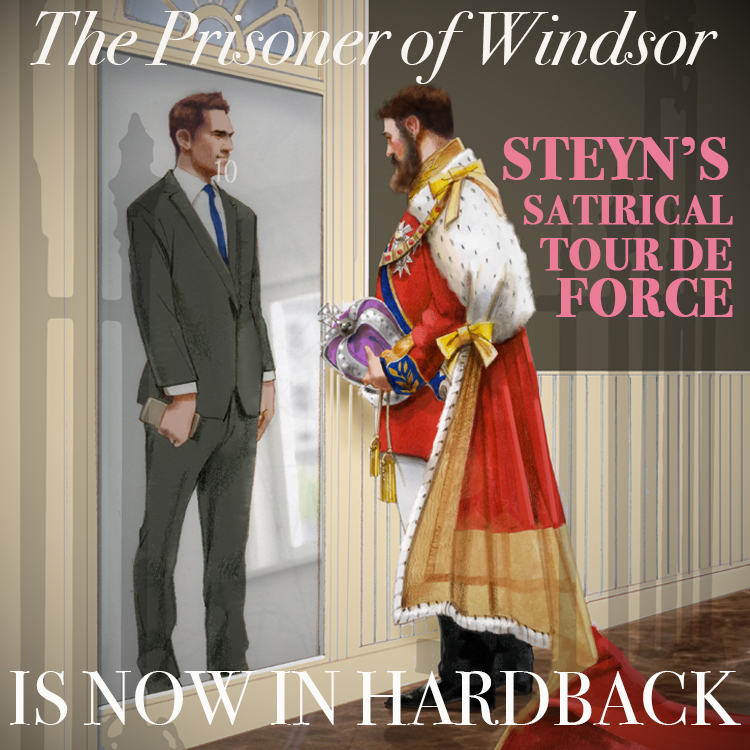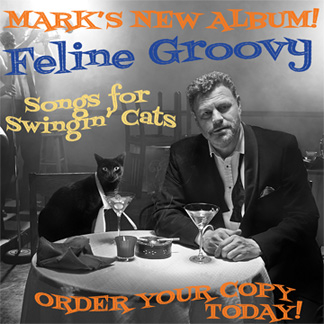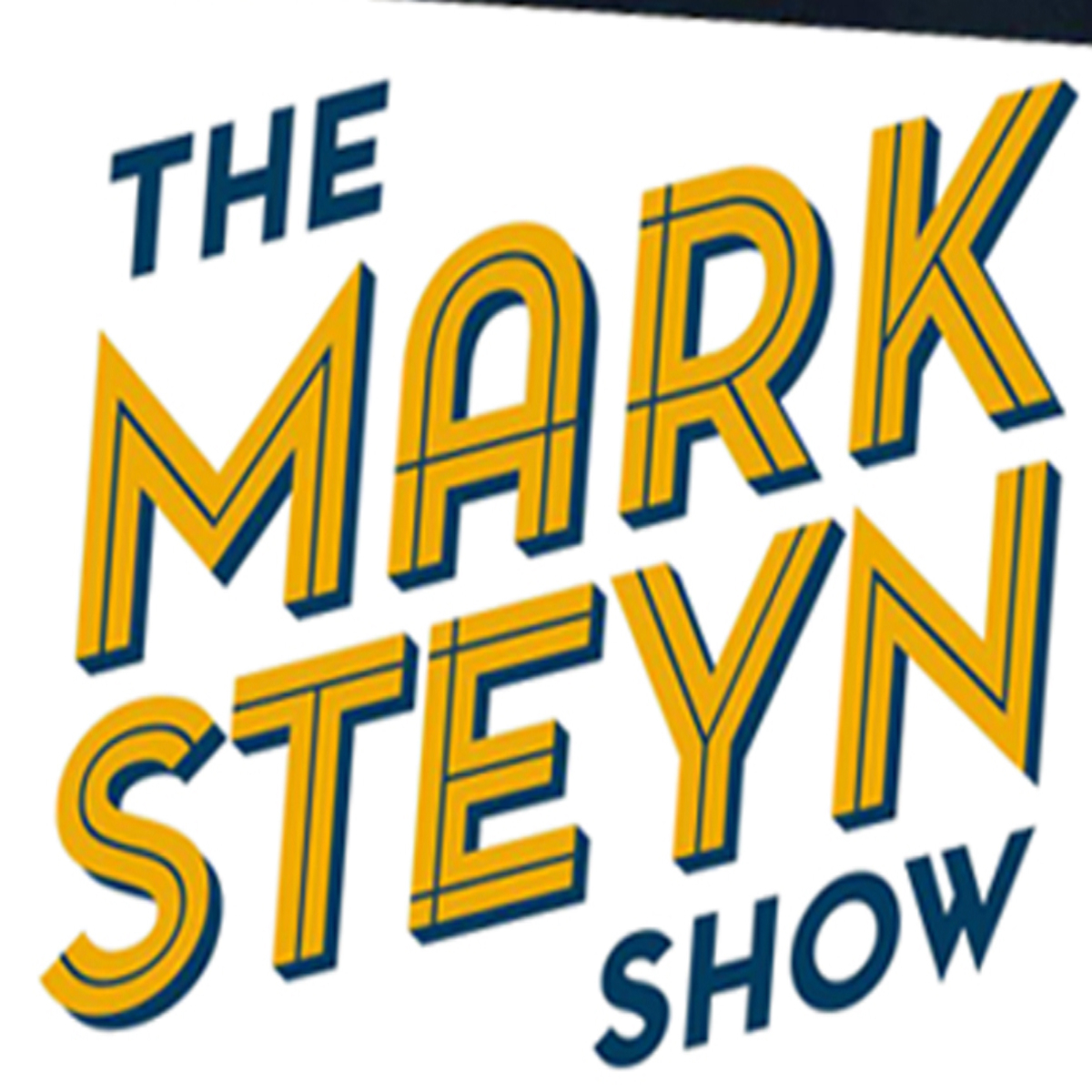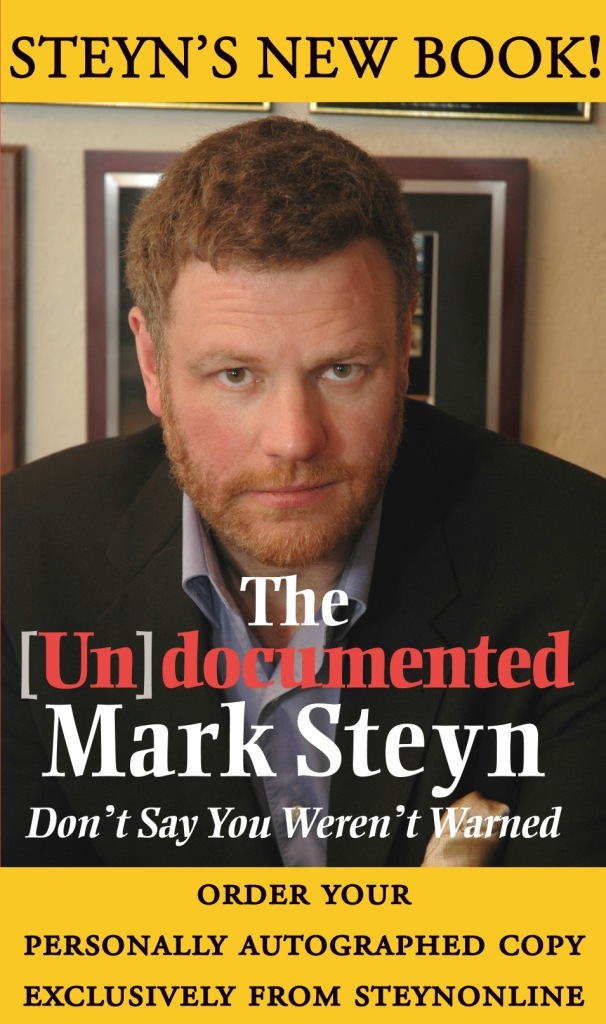A couple of nights ago, I was on telly riffing on Joe Biden's pledge to keep punching and punching and punching at domestic violence. I concluded by suggesting he promise to smash a grapefruit in the face of domestic violence - and I was immediately barraged by emails from viewers who had no idea what I was talking about, and thought I'd flown the coop of whatever sanity remained. Alas, my cultural references are increasingly incomprehensible to those under, say, 112 years of age, but this particular one was once universally known: Jimmy Cagney shoving half-a-grapefruit into the kisser of Mae Clarke in The Public Enemy (1931).
It occurs about halfway through the picture - if you want a more precise timing, you should have asked Miss Clarke's ex-husband, Lew Brice (brother of Fannie), who knew exactly where it came down to the second and would buy a movie ticket, enter the theater moments before, watch the scene and never fail to delight in it, then leave and have a cheeseburger and fries at the diner across the street before returning to enjoy his ex-beloved getting the grapefruit all over again at the very next screening.
The Public Enemy belongs to that brief period between the introduction of talking pictures in 1927 and the enforcement of the new Motion Picture Production Code in 1934. Within three years, almost all the most memorable features of the film would have been forbidden, including not only the fruity tailor measuring Cagney's inside leg, and his seduction by the wife of his boss, but the grapefruit scene itself in all its essentials. The year before James Cagney had been on Broadway, opposite Joan Blondell in a play called Penny Arcade. It flopped, but by then Al Jolson had snaffled up the film rights and, when he sold them on to Warner Brothers, it was with the proviso that the stage principals recreate their roles in the movie version. So Cagney and Blondell were brought out to Hollywood as a kind of team, and for a while were paired together in this and that. Cagney became a star - a legend, one that every nightclub impressionist felt obligated to keep in his repertoire until the guy's death, even if only for the "you dirty rat" line; Miss Blondell remained a supporting player, a mainstay of Warner Bros than whom no one was better at batting hardboiled dialogue back and forth with cops and punks, cynical backstage producers and addle-pated sugar daddies.
It was The Public Enemy that set Cagney on his path. Two Chicago newspapermen had written a bootlegging novel, but couldn't get it published. So they offered it to William Wellman at Warners, and he liked it. The plot's simple enough - two Irish New York kids start bad and get worse - but the local color, the sense of time and place, the bars and clubs and hot-sheet hotels, is very strong. The director cast Edward Woods as aspirant hoodlum Tom Powers and James Cagney in the best-pal role. They shot all day Thursday, Friday, Saturday - and on the Sunday Wellman looked at the rushes and realized they'd made a terrible mistake: Cagney had star quality, and Woods didn't.
So he told the two they'd be switching parts and re-shooting. Woods balked, and the director told him he was lucky to be offered that, and he could take it or leave it. Woods took. Within a few years he was out of Hollywood, and for the last half-century-plus of his life never made a single movie. However, Warners didn't want to re-film the kid scenes, so the first ten minutes of the picture can be rather confusing: the boy who looks like Jimmy Cagney grows up to be Edward Woods, and vice-versa.
Still, you can't argue with the soundness of Wellman's decision. The Public Enemy is the film where Cagney's core persona - the stylized roughneck, the mannered mobster - got its first workout. Public Enemy was one of the first gangster flicks, and it was Cagney's cocksure swagger that endeared them to the public: look at the song'n'dance man's hop and a skip he does back to the car after his first encounter with Jean Harlow. He brought high style to lowlifes: "He's too busy with school work," he sneers of his goody-two-shoes sibling, "learning how to be poor." Later, he scoffs to his brother: "I suppose you want me to go to night school and read poems..."
But the Cagney trick is to turn threats and menaces into a kind of poetry. "You taught us how to cheat, steal and kill," he taunts an old mentor, "and then you lammed out on us." "Yeah," agrees Woods in the pal role, "if it hadn't been for you, we might have been on the level..." We know Cagney's going to kill the terrified mentor, but he's waiting for the right moment, and when the old guy starts in on the song he used to play for them as kids (the "Hesitation Blues") we know what's coming.
Had the roles remained as originally cast, Cagney would have romanced yet again Joan Blondell. Instead, he wound up with Harlow, and, before that, with the uncredited Mae Clarke. They meet in a nightclub:
"Hello, baby. What are you gonna have?"
"Anything you want, big boy."
"You're a swell dish. I think I'm gonna go for you."
She's the kind of swell dish who rooms at the Washington Arms Hotel, and pretty soon he's hanging out there, too. Which is how they come to be breakfasting together in pajamas and robe - a scene the Hays Code would never have permitted, because of the obvious implication that they had woken in the same bed. So no breakfast, no grapefruit scene.
Mae Clarke's character has done nothing to warrant Cagney's displeasure: He's bored by her conventionality, her lack of imagination, that's all. The viciousness of the act is such that for nine decades there are those who say the actress had no idea it was coming. Miss Clarke, on the other hand, said she knew about it, but assumed it was a joke for the amusement of the crew: It didn't seem the sort of thing you'd put in a movie.
But Wellman had his reasons. As the much-married director told Scott Eyman many years ago, "This one particular wife, whenever there was any anger (and you've got to have a few rows, for Christ's sake), this beautiful face would just freeze and wouldn't say a word. It used to just kill me. You're whipped, you're licked before you start. Anyway, I like grapefruit halves and when we used to eat breakfast I often thought of taking that goddamn grapefruit and just mushing it right in that lovely, beautiful, cold face." Instead, he put it in the picture.
1931 was a grand year for Mae Clarke. Later that year she starred in Waterloo Bridge, and opposite Boris Karloff in Frankenstein. Two years on, a car crash left her with a broken jaw and facial scars, and out of the starring roles. The last two decades of her career were spent back in uncredited parts, from Singin' in the Rain (1952) to Watermelon Man (1970), her final film. There are not many actresses whose oeuvres are bookended by fruits, first citrus, then non-.
Cagney was more consistent. Billy Wilder's One-Two-Three (1961) was a great actor's last film for two decades - until his final screen appearance in Ragtime (1981). In One-Two-Three, he threatens Horst Buchholz with a grapefruit to the puss ...but then decides against it. It was thirty years after The Public Enemy, and everyone got the joke.
~Kathy Shaidle, a big hit as our summer movie columnist, will be resuming this beat next month. She is one of the very best writers on classic cinema, and we are honored to publish her. Kathy is facing some tough health challenges at the moment, so we hope, even as you celebrate her return to our motion picture department, that you will also keep her in your prayers.
As we always say, membership in The Mark Steyn Club isn't for everybody, but it does support all our content, on everything from civilizational collapse to our Saturday movie dates. What is The Mark Steyn Club? Well, it's a discussion group of lively people on the great questions of our time; it's also an audio Book of the Month Club, and a live music club, and a video poetry circle (our latest poem airs tomorrow morning). More details here.


